Physical Address
304 North Cardinal St.
Dorchester Center, MA 02124
“Everything has been said before, but since nobody listens, we have to keep going back and beginning all over again.” Andre Gidé, Le traité du Narcisse: Theorie du symbole, 1891
The early evolution of airway management techniques and equipment for anesthesia was largely driven by surgical need, the requirement for airway protection, and the treatment of infectious diseases, such as polio and diphtheria.
The concept of a “difficult airway” was appreciated by the first practitioners of anesthesia with London-based anesthesiologist Joseph Clover (1825-1882) carrying his homemade difficult airway equipment with him to every case.
Although many historical techniques, such as cricothyrotomy, tracheotomy and insufflation have been abandoned for the routine management of the airway, all still have a place in the management of a difficult airway.
Basic airway management remains as important a skill today as it was in 1846.
The laryngeal mask airway (LMA), which has revolutionized airway management over the past 25 years, was based on a concept briefly explored in the 1930s. Great developments are often built on ideas from the past; it is important to have knowledge of history.
Coordinated airway planning with consensus guidelines and difficult intubation trolleys is a modern phenomenon, largely driven by the rapid development of equipment.
Modern technological developments are now generally focused on the management of the “difficult airway.” The vast array of devices currently available commercially necessitates regular, coordinated reappraisals of consensus guidelines.
The Macintosh laryngoscope blade remains the most important laryngoscope blade invented, with its usefulness now further enhanced by video technology.
Accidents, drowning and neonatal asphyxia led to the development of simple airway techniques long before the discovery of anesthesia. But the advent of anesthesia soon tested the limits of these techniques. As surgeons gained confidence with unconscious patients, they embarked on more adventurous operations, requiring deeper planes of anesthesia and often encroaching on the shared airway. Improved airway management techniques and equipment evolved out of necessity, testing the inventiveness and imagination of early anesthesiologists. Later pharmacological developments, like the discovery of muscle relaxants, also had an influence on airway management. Today we have a bewildering array of techniques and devices for managing the airway requiring special interest groups, societies, and algorithms to help the airway practitioner plan their approach to various problems. It is worth reflecting on the historical journey, the way that many of these techniques have developed, to assist with the process and to guide future developments.
A patent airway was essential for life until the introduction of the cardiopulmonary bypass machine in the early 1950s. Despite the limited freedom provided by this innovation, a patent airway remains a fundamental requirement of anesthesia practice. Prior to the discovery of anesthesia, loss of a patent airway was usually associated with accidents, such as head injury drowning, or infections such as diphtheria; the exception was neonates who were frequently born apneic, requiring either simple stimulation or more complex airway relief. While definitive proof is difficult to obtain, extensive review of historical literature suggests that attempts to initiate neonatal respiration were more commonplace than any endeavors to resuscitate drowned, comatose, or diphtheric patients until the middle of the 18th century. Future translations of Chinese, Arabic, and Indian texts may result in modification of these views.
Andreas Vesalius (1514–1564) performed a tracheostomy on a sheep and reported that ventilation with bellows preserved the life of the animal. This advancement established the importance of understanding anatomy in the airway management of a living creature. In the 17th century, Robert Hooke (1635–1703) repeated the experiment with a dog. In a further experiment some years later, he opened the thorax of a dog and pierced several small holes in the surface of the lungs. He then kept the dog alive with fully inflated lungs, providing a constant air supply equal to that leaking through the holes. He concluded that a supply of fresh air was required to sustain life, not motion of the lungs. It was Richard Lower (1631–1691) who made the crucial step in physiological understanding by observing that blue blood entering the lungs had turned red by the time it returned to the left side of the heart. He suggested this was as a result of the absorption of air used to inflate the lungs during his experiments. Further experimentation by John Mayow (1643–1679) confirmed Lower’s findings. There is no evidence that any of these experiments had an impact on medical practice at the time, but they established an understanding of physiological principles that would become important in subsequent airway management.
The practice of stimulating a neonate to induce respiration appears to have been commonplace from very early times. Positive-pressure ventilation seems to have been less popular, but in 1754 Benjamin Pugh (1715–1796) described the use of an air-pipe, which he would introduce into the mouth of a child during a breech delivery. This would ensure that respiration could take place even if delivery of the head were delayed ( Fig. 17.1 ). “The air-pipe, as big as a swan’s quill in the inside, ten inches long, is made of a small common wire, turned very close (in the manner wire springs are made) will turn any way; and covered with soft leather, one end is introduced with the palm of the hand and between the fingers that are in the child’s mouth as far as the larynx, the other end external.” He used this device frequently and said he had made the tube because “I found many children were lost in this way for want of air.” Pugh also describes mouth-to-mouth ventilation as a normal practice if the onset of natural respiration was delayed after delivery: “If the child does not breathe immediately upon delivery, which sometimes it will not, . . . wipe its mouth, and press your mouth to the child’s, at the same time pinching the nose with the thumb and finger, to prevent the air escaping; inflate the lungs, rubbing it before the fire, by which method I have saved many .”
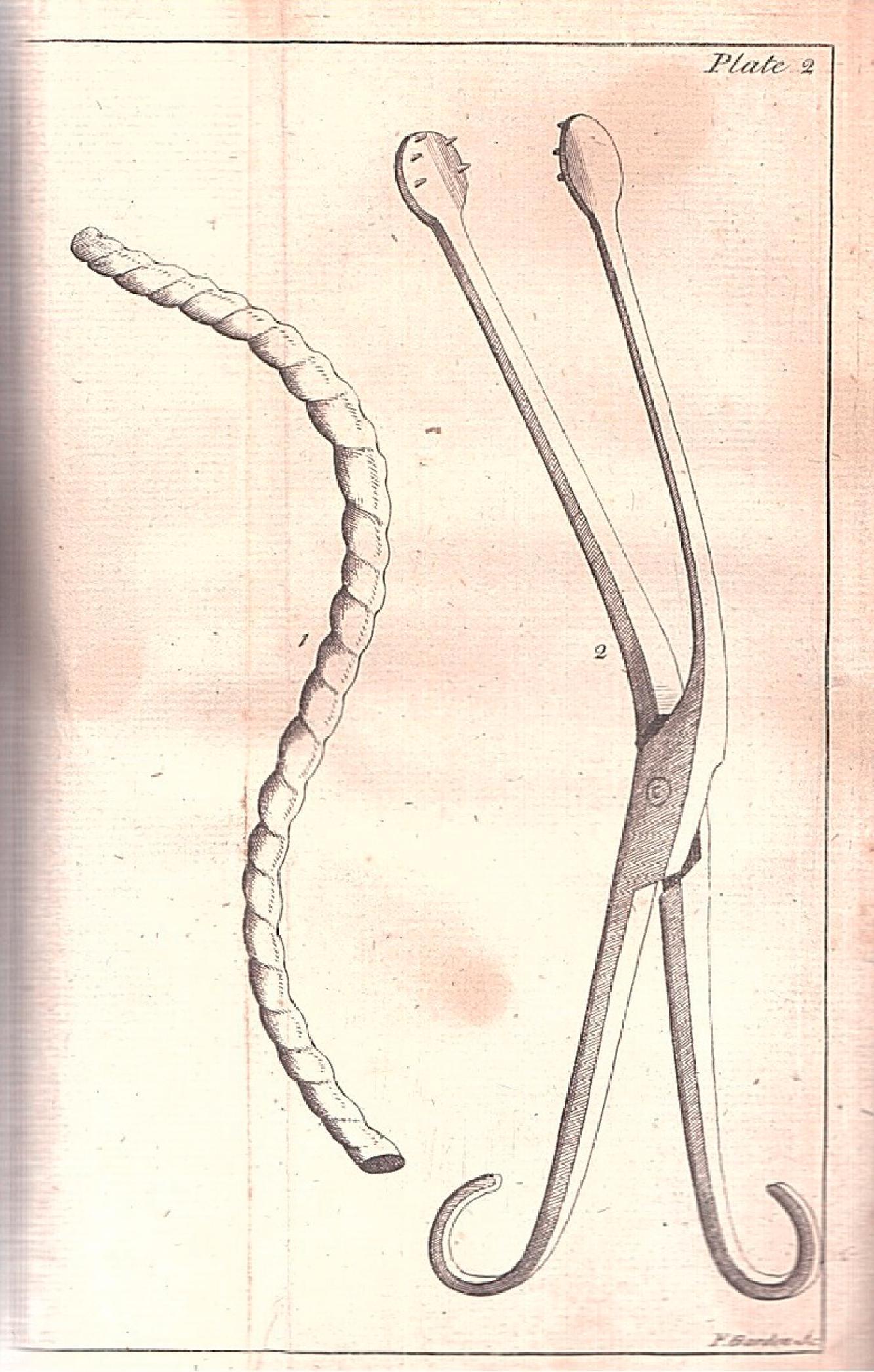
During the 18th century, a change occurred in the approach to those who had died as a result of drowning or other accidents. Since life was associated with movement, it was believed that excitatory stimulation of the dead body to restore movement might also restore life. It was some time before establishing an open airway and attempting to restart respiration became regular practice. Dr. John Wilkinson (1746–1819) wrote Tutamen Nauticum or The seaman’s preservation from shipwreck, diseases, and other calamities incident to mariners in 1759. The second edition in 1764 had an extensive section on restoring life to drowned sailors. “A wholesome strong person ought to blow warm air into his lungs . . . which may be effectuated by a pipe, funnel, faucet, reed, can, hollow stick, quill or the like tube introduced into the mouth. This air blown forcibly, the nostrils being stopped at this time, will make its way into the lungs. . . By this introduced air, the lungs are dilated, and, if any life remains, the circulation immediately recommences.” This contributed to a change in approach across most of Europe—a growing understanding that drowned individuals could be resuscitated if the airway and ventilation could be restored, the lungs inflated with air, and the body warmed or stimulated in other ways.
In Amsterdam, Jacob de Clercq (1710–1777), (1726–1777), a rich merchant, and Cornelius van Engelen (1726–1793), a Mennonite Baptist minister, met with others in de Clercq’s house on October 26, 1767, to found a society to save people who appeared to have drowned. The society, Maatschappij tot Redding van Drenkelingen, still has its premises at Rokin 114B in Amsterdam and remains active today. Members advocated the use of mouth-to-mouth expired air breathing and published leaflets that soon spread across Europe. The continuing success of the process was ensured by awarding bronze, silver, and gold medals, together with a payment of up to 6 gold ducats (3.5G of solid gold each), to those who attempted to rescue and resuscitate people. In 1773, they published an account of their work. This work was translated in the UK in the same year by Alexander Johnson (1716–1790), who suggested a similar society should be formed in London. Johnson established “The General Institution” for this purpose, suggesting the use of nasal tubes and bellows for ventilation, but the organization failed to capture the imagination of others and faded away.
Drs. Thomas Cogan (1736–1808) and William Hawes (1736–1818) had more success. On April 18, 1774, they met with some like-minded colleagues to create a society to save people drowned in the River Thames. After several name changes and the eventual granting of Royal patronage, the group became the Royal Humane Society in 1787; it remains in existence today. Like the Dutch society, the English society offered medals and rewards for attempted resuscitation but also encouraged research into the subject. A series of essays resulted, as well as special tubes that were developed for passing blindly into the trachea, allowing ventilation of the lungs with bellows. One of the first to suggest this was James Curry (d. 1819), who subsequently moved from Northampton south to London. The Royal Humane Society adopted his ideas, offering sets of apparatus, including the tubes for intubation, to those who wished to try the technique ( Fig. 17.2 ). Curry noted that, if oral placement of the “cannula” into the trachea was not possible, the only subsequent treatment available was bronchotomy. “The operation consists of making a longitudinal incision, of about an inch in length, through the skin, so as to lay bare that portion of the wind-pipe immediately below the protuberance which appears in the fore part of the neck; a transverse opening is then made between the rings of the wind-pipe, just large enough to admit the tip of the silver cannula, through which the air must be blown and the lungs inflated. It is scarcely necessary to add that this cannot be done properly but by a medical person.”
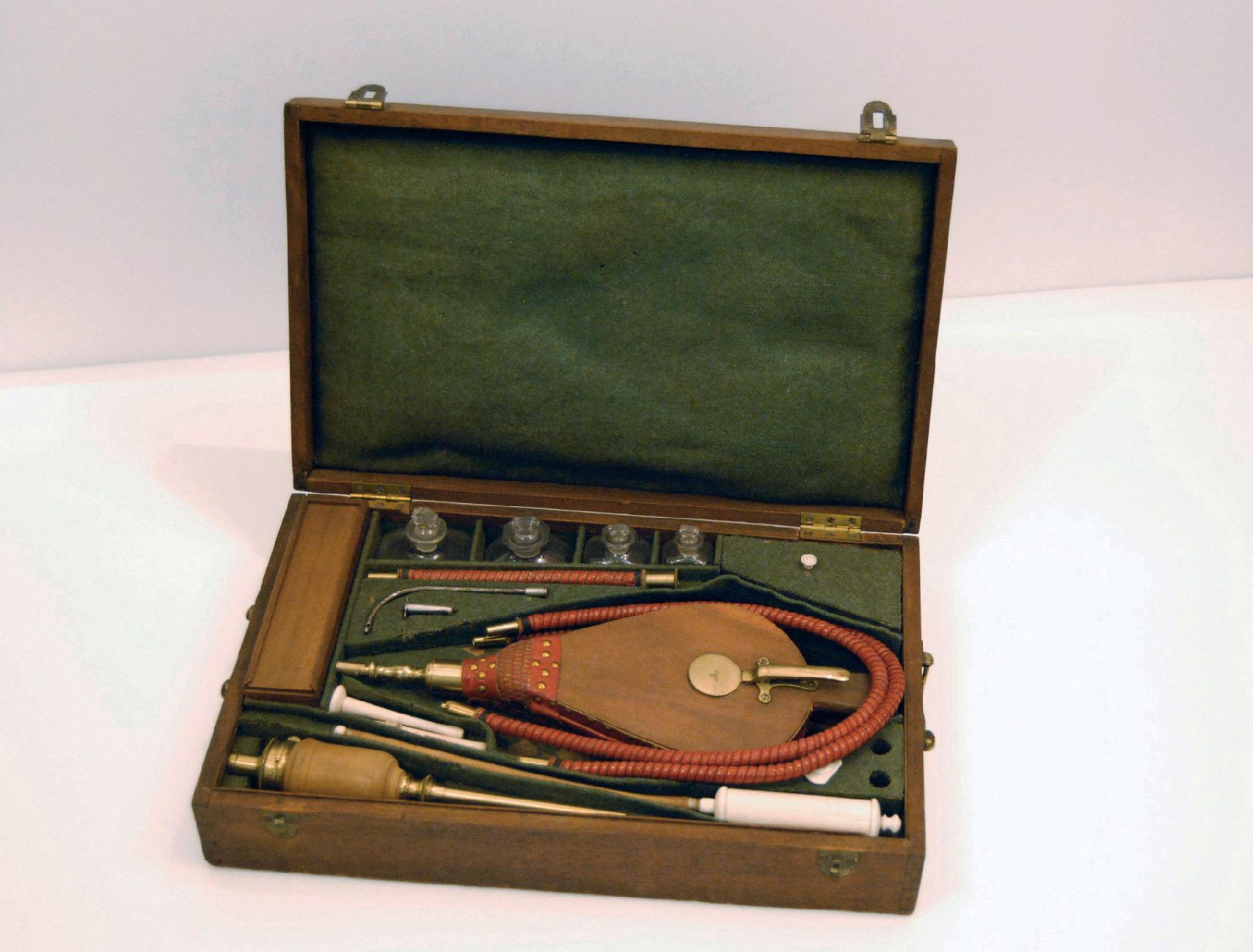
Intubation of the larynx and direct lung ventilation ceased fairly abruptly after the publication of research on the forcible ventilation of animals by Jean Jacques Joseph Leroy D’Etiolles (1798–1860). He demonstrated that administering high pressures and large volumes to the lungs with bellows via tubes could result in lung rupture, with the resulting pneumothorax preventing successful resuscitation. He presented this work to the French Academy, who proceeded to ban the use of tracheal tubes and bellows. The Royal Humane Society rapidly followed suit, but there is evidence that this form of resuscitation continued in London hospitals for at least another 20 years.
The only field of medicine in which intubation of the larynx continued unabated was in neonatal resuscitation. In 1807, François Chaussier (1746–1828), Professor of Obstetrics in Paris, described an intubation cannula with a small sponge at the distal end to provide a seal at the larynx, along with a detailed description of mouth-to-mouth expired air ventilation of neonates. He also had previously advocated the use of oxygen therapy in apneic neonates.
Initially, unconsciousness resulting from the inhalation of ether vapor was not associated with airway problems. In the 1840s, light anesthesia allowing patients to move or even talk during procedures meant that respiratory obstruction was relatively rare. As practitioners began to administer deeper anesthesia, reports emerged of “stertorian breathing” and even cyanosis; the latter sign interpreted to be breath holding at a light plane of anesthesia. Most operations were performed with the patient sitting upright in a chair so the airway remained clear, with the jaw, tongue, and soft tissues falling forward to allow relatively unhindered respiration. When more extensive surgery was undertaken, patients were placed supine or only slightly head up; in this position the airway obstructed as consciousness was lost. This problem became more apparent when chloroform anesthesia was administered.
The standard treatment of this respiratory obstruction was described by Jacob Heiberg (1843–1888), a Norwegian general surgeon: “[T]here are several circumstances which may occur during the administration of chloroform, and cause anxiety to the operator and his assistants. These cases are chiefly associated with incomplete, rattling respiration, pale livid color of the face, feeble pulse[,] etc. It is especially the imperfect respiration which causes anxiety and gives the impression that the entrance to the trachea is, as it were, closed by a valve. As a remedy for this evil, which is, so to say, of daily occurrence in every surgical infirmary, a special treatment has been methodized. A peculiar gag is applied, with a screw which forces the teeth apart, and the tongue is then drawn out with forceps or with pointed hooks” ( Fig. 17.3 ).
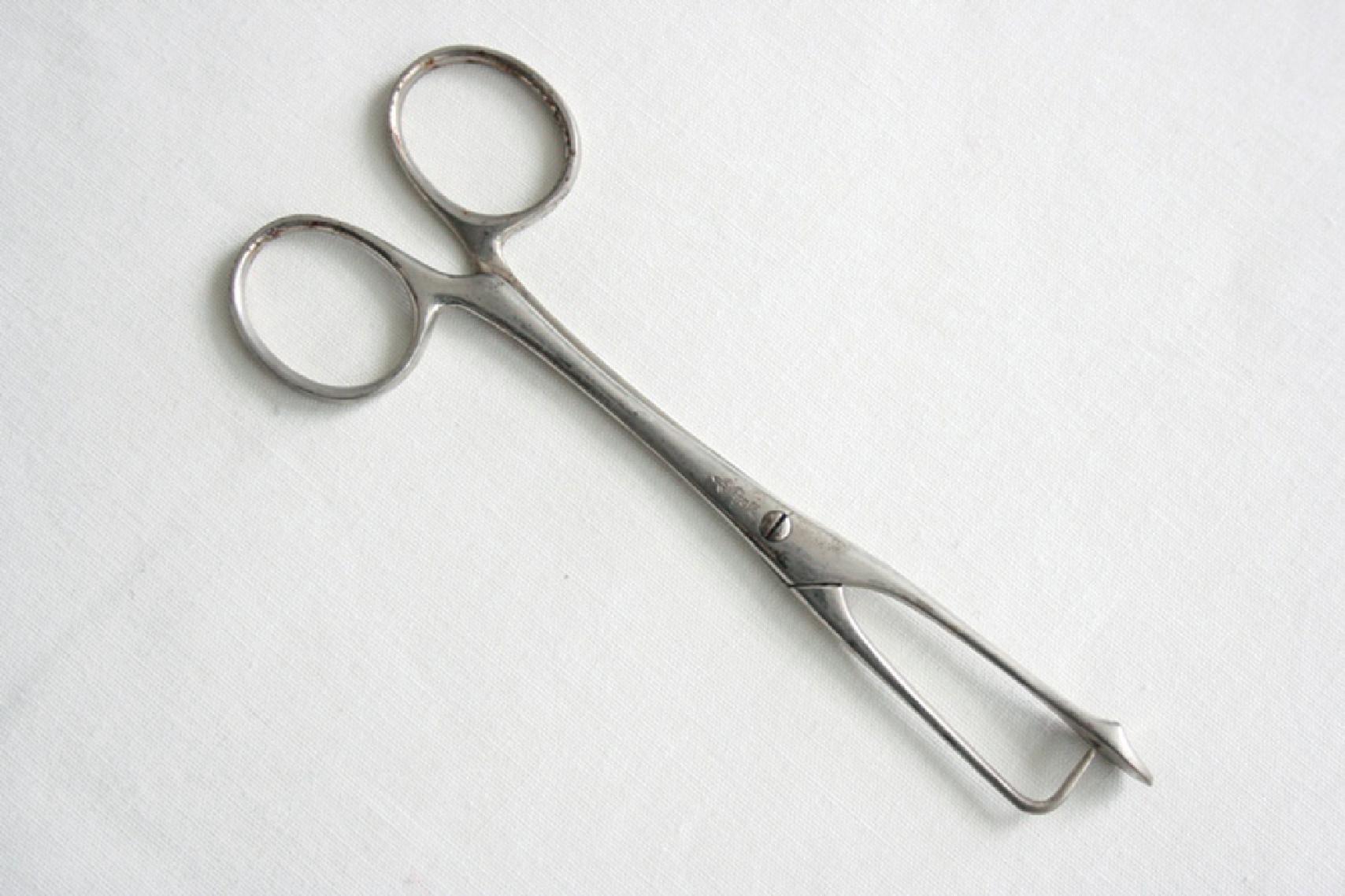
This technique was effective and popular, but it was also brutal. Joseph Clover, then the leading anesthetist in England, did not recommend it; he found that merely raising the chin from the sternum, “to give effect to the muscles between the chin and hyoid bone,” was enough to relieve the airway obstruction. Heiberg also abandoned tongue forceps, highlighting broken teeth and lacerated tongues as a common outcome. His treatment, developed over two and a half years, was both simple and effective: “This consists in drawing forward the under-jaw in toto.” He had tried this technique on over a thousand consecutive chloroform cases and had not needed any other manipulation or alteration in the anesthesia. His technique went like this: “Standing preferably behind the reclining patient, the operator places both his thumbs on the symphysis of the lower jaw, presses the second joint of the bent forefingers behind the posterior margin of the rami ascendentes of the under-jaw, and thus holding the whole bone fast between the two hands, draws it forcibly upwards. . . . the head of the jaw slips forward over the tuberculum with an appreciable jerk, the whole under-jaw slides forward. . . . When the experiment is successful, a deep complete respiration will immediately take place, and will be continued as long as the jaw is kept ‘luxated’ forward.” Earlier, Friedrich von Esmarch (1823–1908) had described a similar technique in his handbook for battlefield surgery. , He did not claim to have invented it, saying he had been shown the technique by an unknown British surgeon. Toward the end of the century, when anesthesia textbooks, such as those of Sir Frederic Hewitt (1857–1916) and James Gwathmey (1862–1944), appeared, they contained descriptions and illustrations of this simple airway management technique. ,
In the early 20th century, airway management was augmented by the introduction of a simple straight oral airway. Sir Frederic Hewitt was one of the great innovators of his era in anesthesia. He described respiratory obstruction under anesthesia as “auto-asphyxia” and recognized it was more common in patients who were “thick-set” or in whom the surgical operating position—for example, steep head down—caused the tongue to naturally fall backward across the airway. His airway was constructed with “a circular metal ring, with an internal diameter of half an inch, and a deep groove in its outer circumference to allow the ring being held firmly by the teeth.” The initial airway was a straight 0.5-inch diameter rubber tube, 3.25 inches long, attached to the metal ring with the distal opening beveled and directly opposite the laryngeal opening when correctly inserted. After a few years this straight tube was altered to a curved one, which more appropriately reflected the anatomical structures in the mouth and pharynx ( Fig. 17.4 ). Oral airways subsequently became very popular, and a large variety were developed, each with a specific name and shape. Construction materials also varied, with rubber, metal, and plastic all finding a place. The first metal airway was a flattened version of Hewitt’s, designed by Karl Connell (1878–1941) ( Fig. 17.5 ). Other metal airways were created by Mona Dew Roberts (1878–1936), a Liverpool anesthetist, and Ralph Waters (1883–1979) ( Fig. 17.6 ). Ralph Waters did not describe this airway in the literature. The device, which had a side tube for insufflation of gases, appears in the Foregger Catalogue of 1930, where it is listed as “Waters’ insufflation or suction airway.” However, correspondence in the University of Wisconsin Archives dates the airway to August 1928 or even earlier. The ubiquitous Guedel airway, still in common use, was described by Arthur Guedel (1883–1956) in 1933.
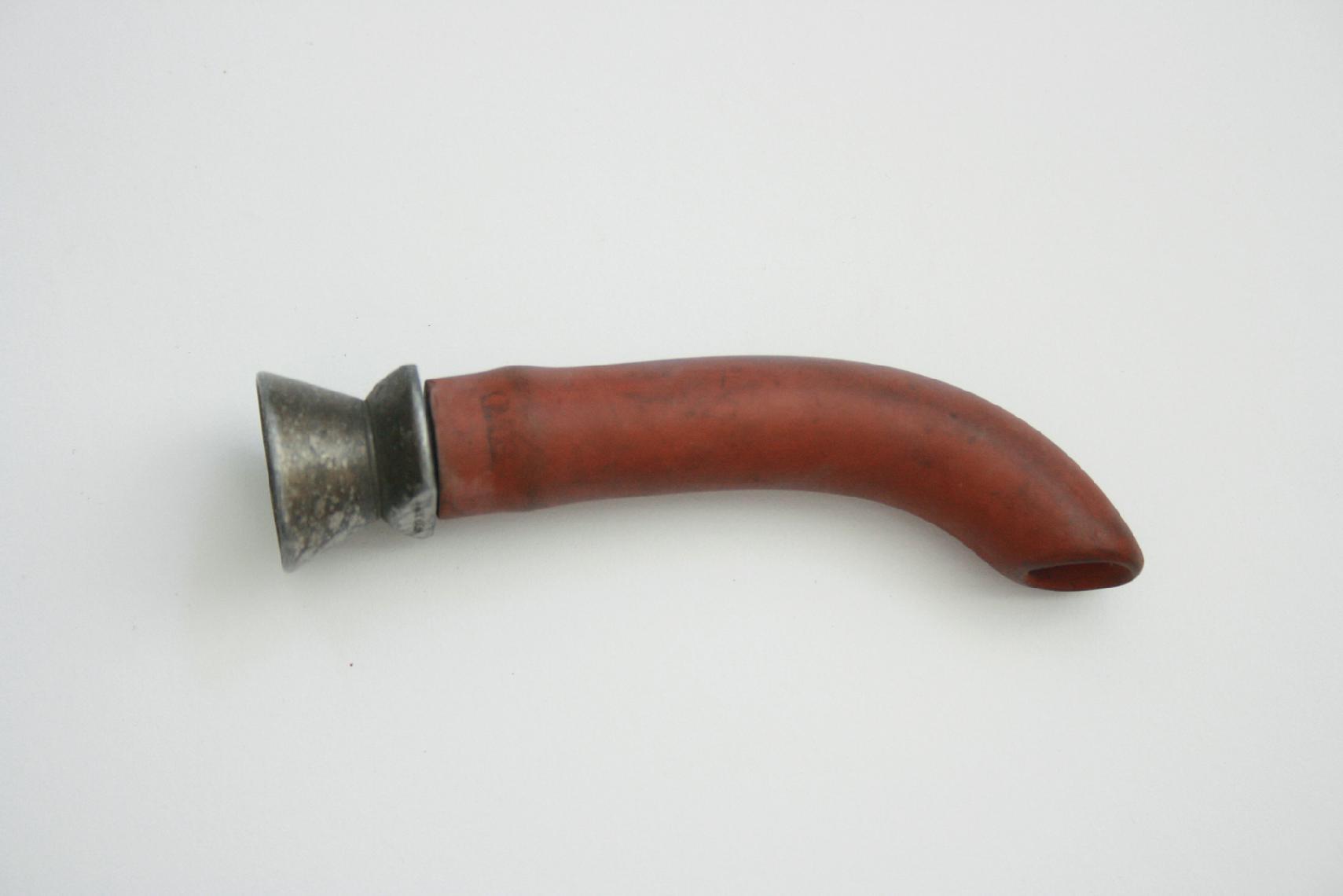
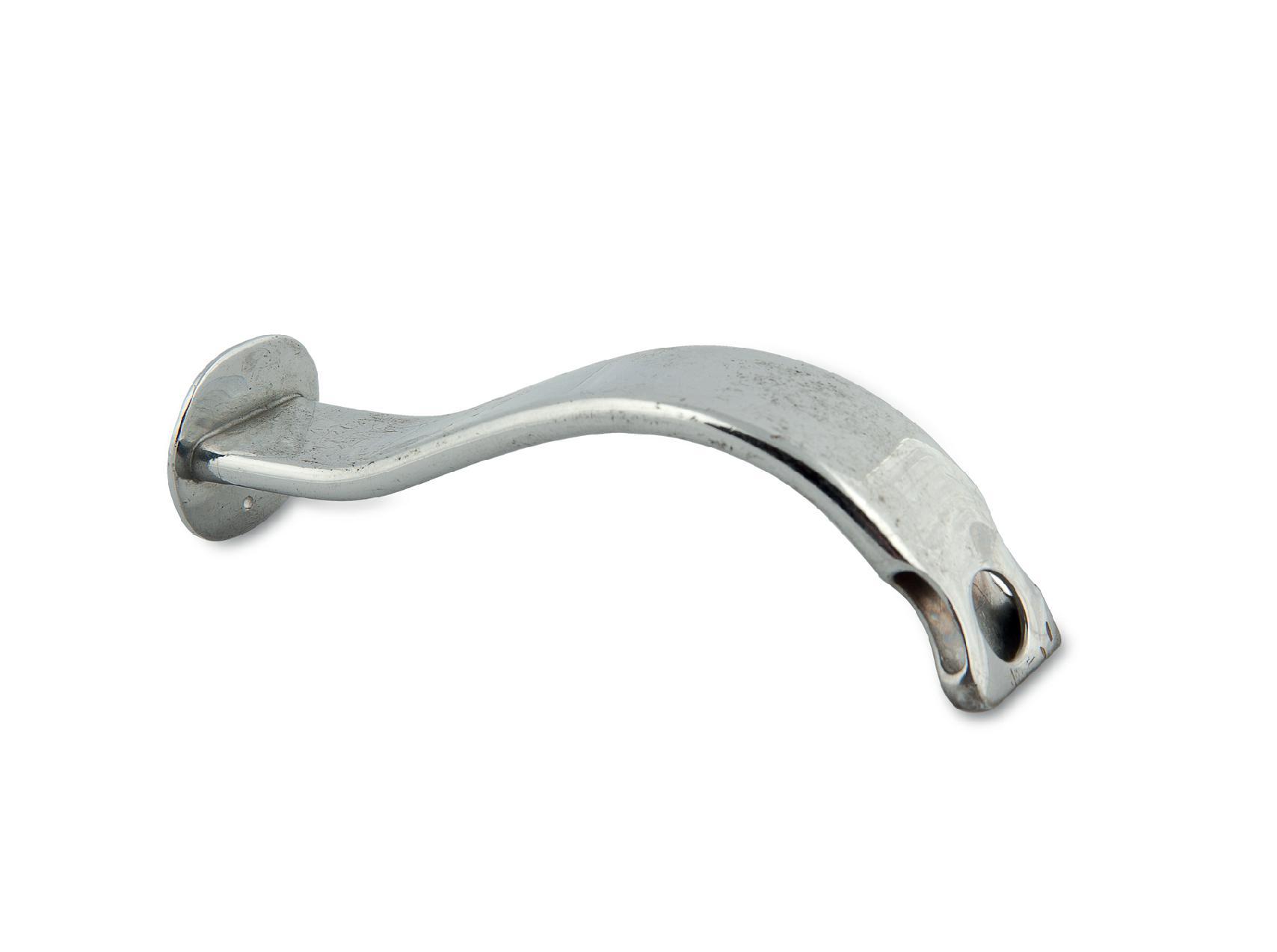
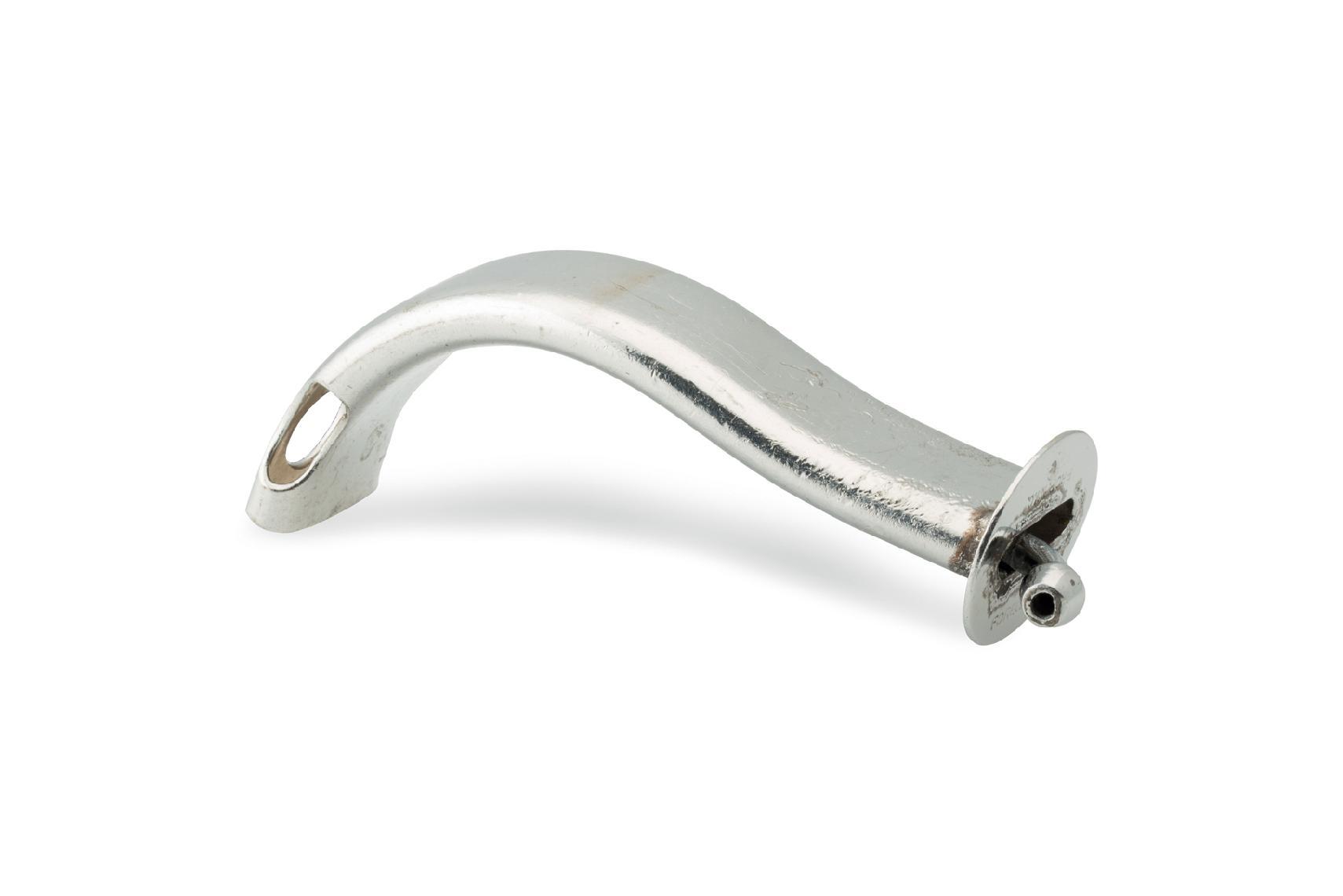
In 1859 in Paris, Gustave Fauré (1843–1924) utilized a technique developed by Joseph François Malgaigne (1806–1865) for ether in 1847, giving chloroform anesthesia via a rubber tube passed into the nostril. , The rubber tube was 8 to 13 mm in diameter and inserted to a depth of up to 17 cm via the nose. A similar technique was adopted by Clover in 1881, followed by a series of other practitioners who used nasal-pharyngeal tubes for facial surgery. Karl Connell used a nasopharyngeal tube for artificial ventilation in 1913. The origins of the simple flanged nasopharyngeal airway are difficult to establish; Victor Goldman (1903–1993) described the soft plastic version of this airway in 1968 but does not appear to have been responsible for the initial design. , Despite this, modern nasopharyngeal airways are often referred to as Goldman airways in the UK.
In the mid-19th century, epidemics of diphtheria swept through Europe and the United States of America. French physician Pierre Bretonneau (1778–1862) named the disease in 1826, after the “leather-like” membrane that gradually obstructs the larynx of the afflicted child. Bretonneau was also the first to distinguish this disease from scarlet fever and reportedly the first to successfully treat the disease with tracheostomy. However, there were isolated prior reports of tracheostomy used to treat membranous croup, a disease that was almost certainly diphtheria. Initially tracheostomy provided the only hope of recovering the airway: a surgical procedure that carried a very high morbidity in a moribund hypoxic child. Physicians in several countries (Johann Dieffenbach [1792–1847] in Berlin, Germany, in 1839; Jean François Reybard [1795–1863] in Lyon, France in 1855; and Josef Weinlechner [1829–1906] in Vienna, Austria in 1866) tried to introduce some form of catheter into the larynx to overcome diphtheric obstruction. They were rarely successful, and their techniques were impossible for others to duplicate. In 1858, Eugène Bouchut (1818–1891) presented seven cases of laryngeal intubation to the Academy of Science in Paris. He placed short metal tubes into the larynx, leaving them in place for a couple of days, but the tubes were anatomically inaccurate, causing severe pain and often hemorrhage. The Academy was influenced by Armand Trousseau (1801–1867), who had refined and advocated the use of tracheostomy for diphtheria and opposed to this practice, so Bouchut’s experiments eventually ceased. Nearly 30 years later Joseph P. O’Dwyer (1841–1898), appalled by the pediatric mortality from diphtheria in New York and apparently unaware of Bouchut’s work, worked in the hospital mortuary dissecting the necks of diphtheric children to perfect an anatomically accurate laryngeal tube. His first cases of successful treatment were presented in 1885. He continued to develop and perfect this apparatus over the following decades ( Fig. 17.7 ). Later he created a series of tubes for the treatment of syphilitic tracheal stenosis, as well as a ‘tube’ to attach to the bellows ventilator developed by George Fell (1849–1918) for the resuscitation of opium overdoses. Fell’s original apparatus was connected to a face mask or directly to the trachea by a tracheostomy. The Fell-O’Dwyer apparatus, an elegant combination of an adult O’Dwyer tube and the Fell bellows, proved to be very successful.
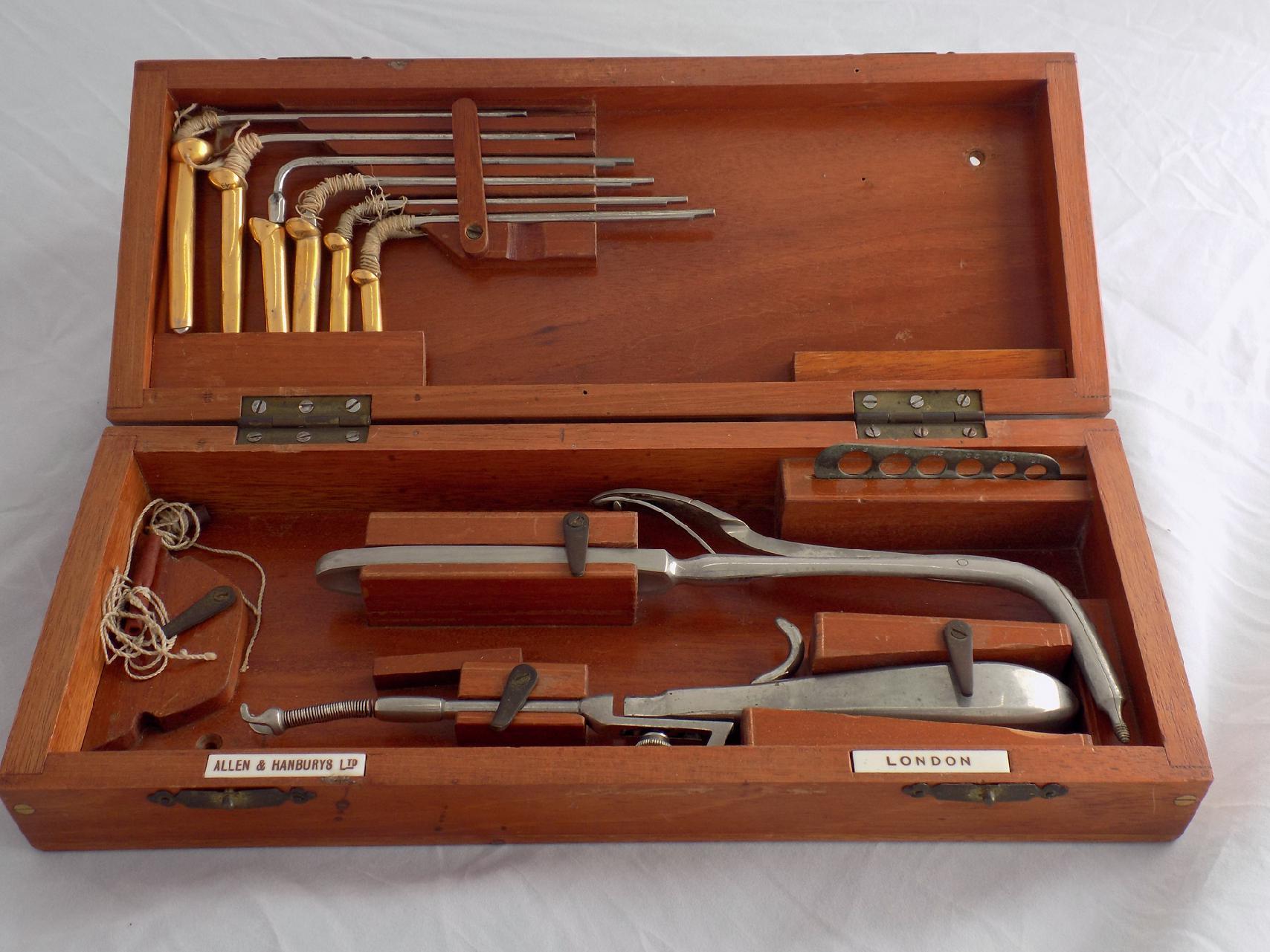
In 1871, Friederich Trendelenburg (1844–1924) described a cone and cuffed metal cannula for the delivery of anesthesia via a tracheotomy ( Fig. 17.8 ). His objective was to overcome the problem of blood contaminating the airway during oral surgery. Although effective, it was a disfiguring and unpopular technique that was never widely adopted. Karl Maydl (1853–1903), working in Prague, connected a glass Trendelenburg Cone to an O’Dwyer laryngeal tube, packing the pharynx with gauze to protect the airway during anesthesia delivery. Viktor Eisenmenger (1864–1932) had a similar idea, but he connected a hard rubber tube with a tracheal cuff to the Trendelenburg Cone. Both inserted their tubes with the aid of an oral mirror. These techniques partly overcame the issues faced by oral surgeons, but the thoracic cavity remained a problem. Once surgeons opened the chest in a spontaneously breathing patient, respiration was no longer possible, as the lung collapsed. This made all but the shortest operations in the chest impossible. In Paris, Eugene Doyen (1859–1916) created a special introducer to insert a laryngeal tube. Once inserted, the tube was connected via rubber tubing to hand bellows, which could both blow and aspirate air. The soft tubing connectors were easily obstructed by the patient’s teeth, but it was a preliminary attempt to maintain lung volumes during thoracic surgery. By attaching a Trendelenburg Cone to the Fell-O’Dwyer apparatus, Rudolph Matas (1860–1957) created a more effective system of ventilation and anesthesia for thoracic surgery.
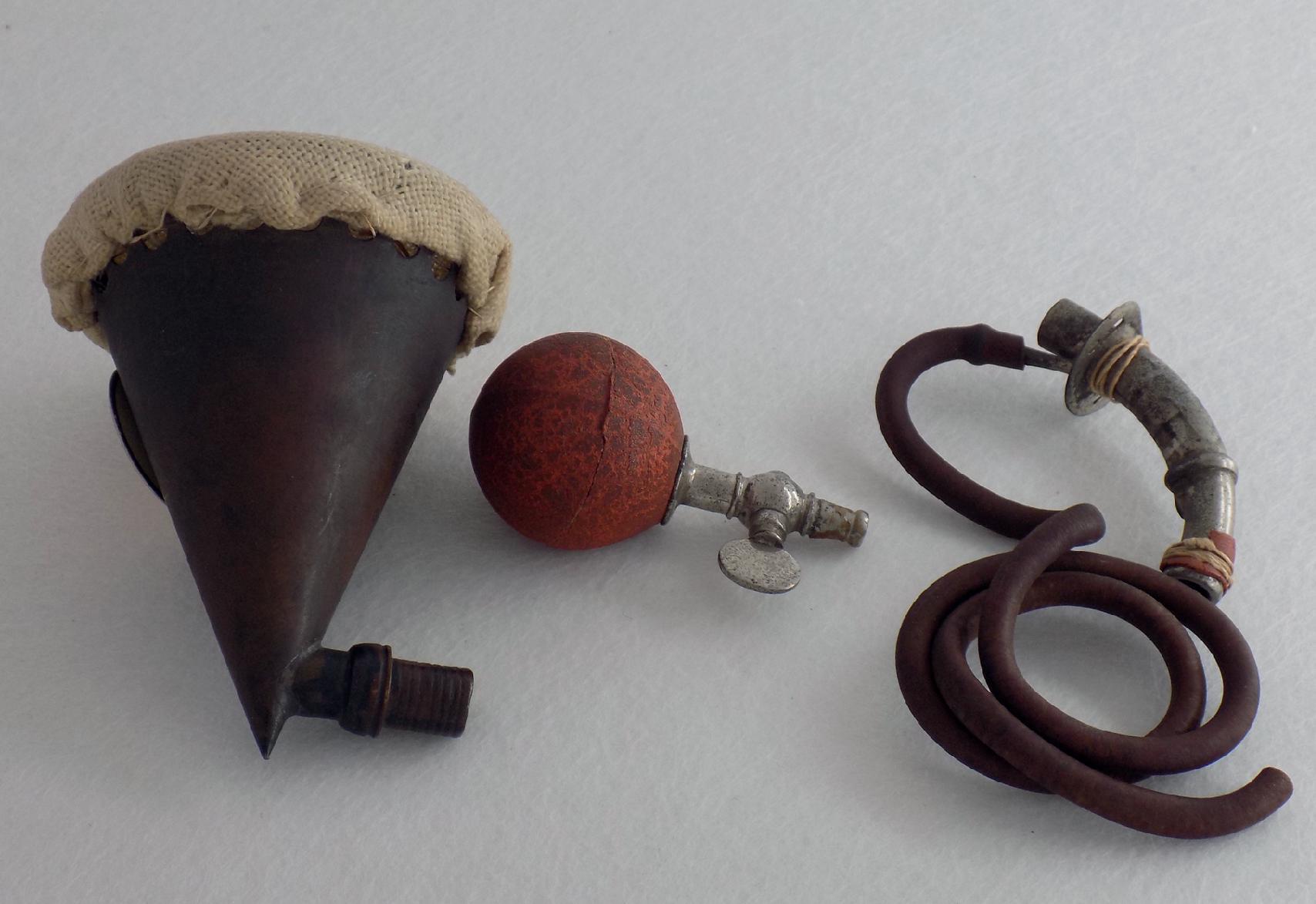
Become a Clinical Tree membership for Full access and enjoy Unlimited articles
If you are a member. Log in here